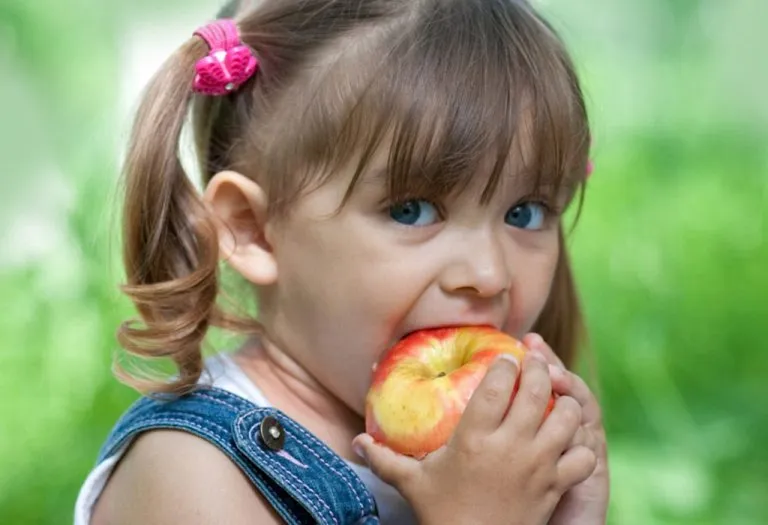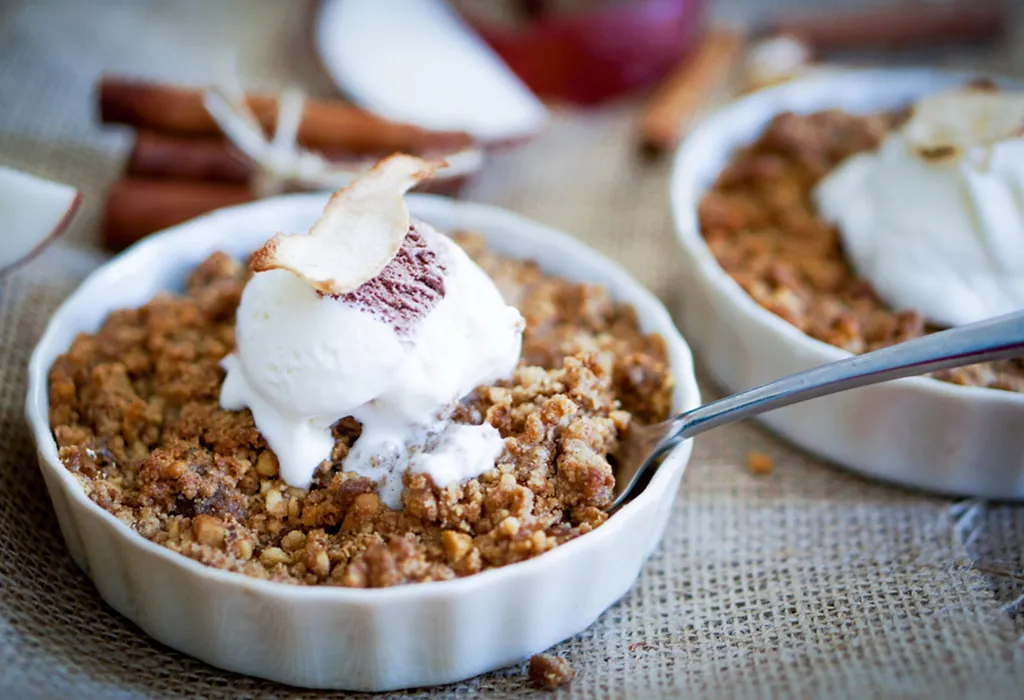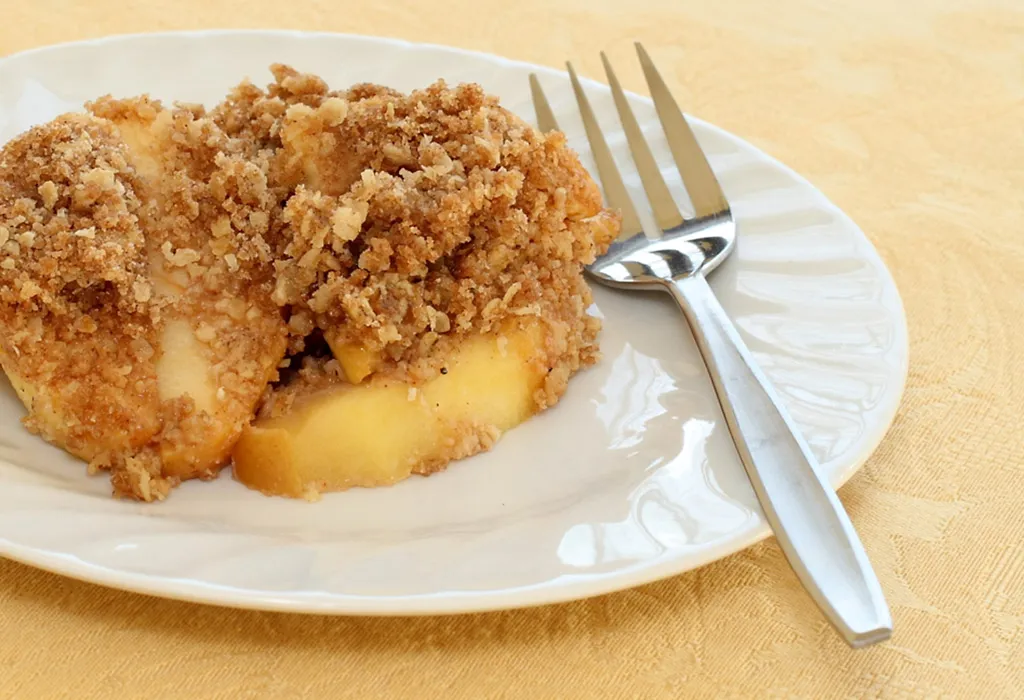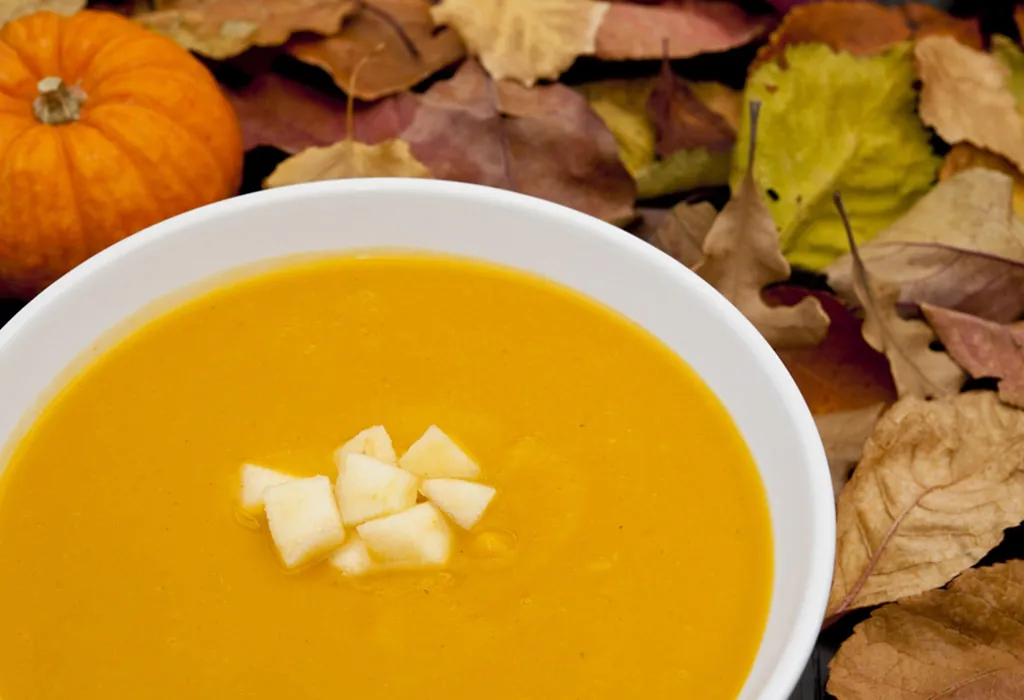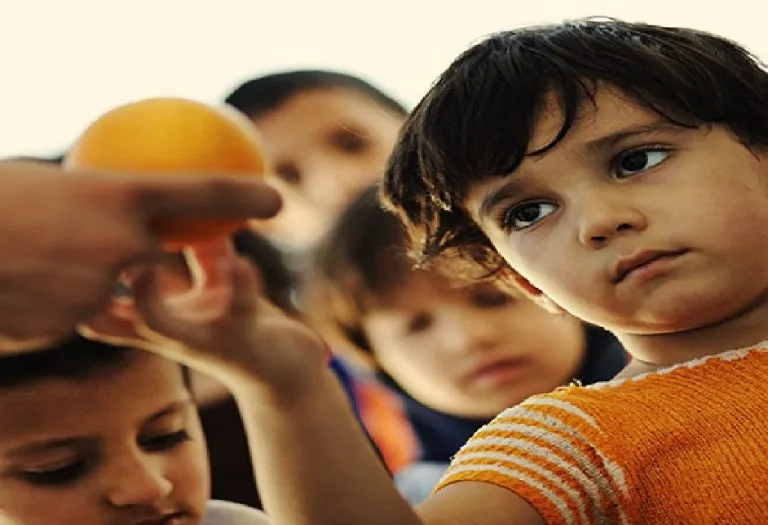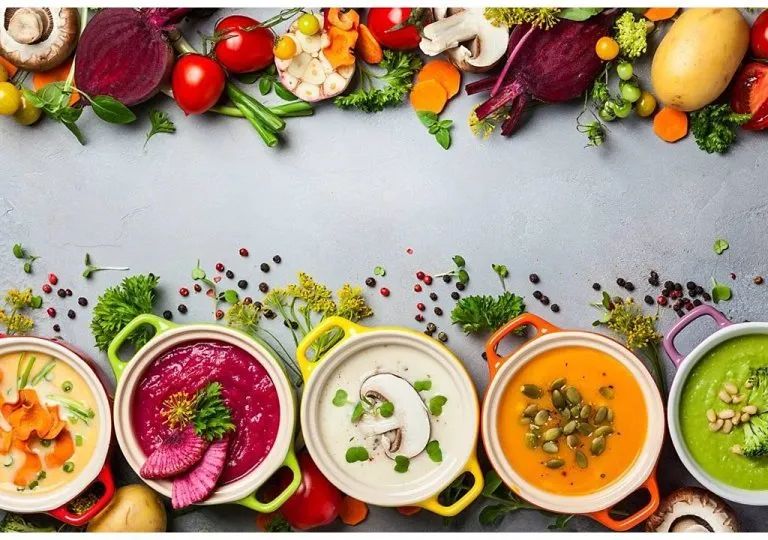Apples for Kids – Health Benefits & Interesting Facts

Apples are a beloved fruit, cherished by many for their crisp texture and sweet, tangy flavor. They hold a special appeal for youngsters, making them an excellent choice for kids’ snacks. Rich in essential minerals and vitamins, apples offer a wealth of nutritional benefits. They are low in calories, yet high in antioxidants, which are renowned for their healing properties. Incorporating apples into a child’s diet not only provides a tasty treat but also supports overall health and well-being. Whether enjoyed fresh, in slices, or as part of a recipe, apples for kids are a versatile and beneficial addition to any meal plan, promoting a healthy lifestyle from an early age.
Health Benefits of Apples for Children
Apples are more than just a delicious snack; they offer a variety of health benefits that can support your child’s overall well-being. Here are some advantages of including apples in your child’s daily diet.
1. Energy Boost
This is a major benefit of apples for kids. Apples are a rich source of carbohydrates, which provide a steady release of energy. This makes them an ideal snack for active children, helping to fuel their play and learning throughout the day.
2. Rich in Nutrients
Apples are abundant in Vitamin C, dietary fiber, and a range of phytochemicals. Vitamin C supports immune function and skin health, fiber aids in digestion, and phytochemicals offer various health benefits, including anti-inflammatory and antioxidant properties.
3. Supports Heart Health
The dietary fiber found in apples helps reduce levels of bad cholesterol (LDL) in the blood. By lowering cholesterol, apples contribute to heart health and can decrease the risk of cardiovascular diseases over time.
4. Promotes Digestive Health
Apples contain pectin, a type of soluble fiber that supports digestive health. Pectin helps to manage diarrhea by absorbing excess water in the intestines and promotes regular bowel movements to prevent constipation.
5. Regulates Blood Sugar
The natural sugars in apples are balanced by their fiber content, which helps to stabilize blood sugar levels. This makes apples a smart choice for children, as they can help maintain steady energy levels and reduce the risk of developing diabetes.
6. Strengthens Immunity and Repairs Tissues
Vitamin C in apples is crucial for tissue repair and the production of collagen, which is vital for healthy skin and bones. Additionally, it supports the immune system, helping to ward off illnesses and aid in the recovery from injuries.
7. Boosts Vision and Respiratory Health
Apples are rich in antioxidants and phytonutrients that support eye health and can help alleviate symptoms of asthma. These compounds contribute to maintaining good vision and respiratory function, which are important for overall health.
8. Protects Brain Health
Quercetin, found in the skin of apples, has potent antioxidant and anti-inflammatory effects. This helps protect brain cells from oxidative stress and inflammation, potentially supporting cognitive function and reducing the risk of neurodegenerative conditions.
Nutritional Value of Apples
A medium-sized apple has less than 100 calories and no fat, sodium, or cholesterol content. Take a look at the following chart for detailed information about the nutritive values of apples.
| Amount per serving | Daily value % based on 2,000 calorie diet |
| Total carbohydrates – 25 g | 8 % |
| Dietary fibre – 4 g | 17% |
| Sugars – 19 g | 3.8% |
| Vitamin A | 2% |
| Vitamin C | 14% |
| Calcium | 13.68mg |
| Iron | 1% |
| Protein – 0 g | 0% |
| Cholesterol – 0 mg | 0% |
| Sodium – 0 mg | 0% |
| Total fat – 0 g | 0% |
Are There Any Health Risks of Eating Apples for Kids?
While apples are generally a healthy and nutritious choice for children, it’s important to be aware of potential risks associated with their consumption. Understanding these risks can help parents make informed decisions about their child’s diet.
1. Choking Hazard
Apples, especially whole or large pieces, can pose a choking hazard for young children. It’s important to cut apples into small, manageable pieces and supervise eating to prevent choking.
2. Pesticide Residue
Apples may carry pesticide residues, which can be a concern for children. To minimize exposure, consider washing apples thoroughly or choosing organic options when possible.
3. High Sugar Content
While apples contain natural sugars, excessive consumption can contribute to high sugar intake. Moderation is key to prevent any potential impact on dental health or blood sugar levels.
4. Digestive Issues
Eating too many apples can lead to digestive discomfort due to their high fiber content. This might include symptoms like bloating or gas. Introducing apples gradually into a child’s diet can help mitigate these issues.
5. Tooth Decay
The natural sugars in apples, if left on the teeth, can contribute to tooth decay. Encourage children to brush their teeth after eating apples to maintain good oral hygiene and prevent cavities.
Easy Apple Recipes for Kids
Apples have a host of benefits (1). Besides eating apples raw, there are plenty of ways in which apples can be used to keep children interested in consuming at least a couple of servings of this fruit each day. Instead of just apple juice for kids, here are some recipes for you to try out:
1. Apple Crumble With Vanilla Ice Cream
Ingredients
- Six crumbled oatmeal cookies
- ½ cup whipped cream
- ½ cup vanilla ice cream
- ¼ tsp cinnamon powder
- ¼ cup stewed apples
Method
Take all the ingredients except two of the cookies in a blender and make it into a smoothie. Pour it into serving bowls and top off with remaining cookies. You can change the recipe to include your favourite flavour of ice cream and more cookies or apples depending on the child’s preference
2. Individual Baked Apples
Ingredients
- Four firm apples
- 8 tbsp( Teaspoon) jam
- 4 tbsp apple juice or water
- Microwave-safe baking dish
Method
Core each of the apples and peel them about one-third of the way. Pour the apple juice or water into the bottom of the baking dish and then place each of the apples in this with the peeled side up. Pour about two tablespoons of jam into the centre of each apple. Cover the dish with plastic that has been pierced for vents or waxed paper. Bake in a microwave on high for about five minutes or till the apples become tender.
3. Yummy Apple Crisps
Ingredients
- Four green apples; peeled and sliced into thin pieces
- ½ cup brown sugar
- ½ cup oats
- ½ cup flour
- ¾ teaspoon cinnamon powder
- ¾ teaspoon nutmeg powder
- 6 tbsp butter
- Baking dish
- Mixing bowl
Method
Preheat the oven to 375° and grease the baking dish. Then place the apples in the baking dish. Mix rest of the ingredients well in a bowl and then sprinkle this mixture over the apples. Bake it for 40 minutes or till the topping turns golden brown.
4. Savoury Apple and Squash Soup
Ingredients
- 1 ½ kg butternut squash
- 2 Granny Smith apples
- 3 cups chicken stock (or vegetable stock)
- 2 cups chopped onions
- Three tsp garam masala powder/
- 2 tbsp butter
- One tsp salt
- Pepper to taste
Method
Peel the squash and de-seed it before cutting into cubes. Core the apples, peel them, and cube. Place a large pot on the stove and melt the butter. Then add the chopped onions and sauté until translucent. Put in the curry powder and stir. Next, add squash, apples, stock, salt, and stir till it comes to a boil. Reduce the heat and simmer for around two minutes. Check to see if the squash and apples are tender. If not, boil for some more time. Puree this and then simmer again before adding pepper. Serve hot.
5. Apple and Peanut Butter Sandwiches
Ingredients
- 2 apples
- ¼ cup peanut butter
- 1 tbsp honey (optional)
- A handful of raisins or granola (optional)
Method
Core and slice the apples into thin rings. Spread peanut butter evenly on one side of each apple slice. If desired, drizzle a bit of honey on top of the peanut butter, and sprinkle with raisins or granola. Top with another apple slice to make a sandwich. Serve immediately.
Some Interesting Facts About Apples
Aside from the health benefits of apples, here are some interesting apple tree and apple fruit facts for kids.
- There are over 7,500 different types of apples found across the world.
- There are five carpels or seed pockets in every apple.
- Apple trees can live to be a hundred and touch heights of 40 feet or more.
- The world’s top apple producers are China, United States, Turkey, Poland and Italy.
- When it’s time to harvest apples, they have to be picked by hand.
- The science of cultivation of apples is called pomology.
- One of the oldest varieties of apples is the Lady or Api apple.
- Apples are part of the rose family.
- It is said that the apple tree originated in the region between the Caspian Sea and the Black Sea.
- Around one-fourth of an apple is made of air which is why they float in water.
- There is archaeological evidence to prove that humans have been relishing apples since 6500 BC.
- The largest apple on record weighed 1.4 kg.
FAQs
1. Can apples contribute to iron deficiency in kids?
While apples are not a significant source of iron, they can be part of a balanced diet. It’s essential to include iron-rich foods, such as lean meats and fortified cereals, to prevent iron deficiency.
2. Are there any long-term effects of consuming apple juice versus whole apples?
Regularly consuming apple juice instead of whole apples can lead to excessive sugar intake and a lack of dietary fiber. Whole apples provide more nutritional benefits, including fiber, which aids digestion and helps maintain stable blood sugar levels.
3. Can apple seeds be harmful to children?
Apple seeds contain amygdalin, which can release cyanide when metabolized. While the amount in a few seeds is unlikely to cause harm, it’s best to ensure children do not eat the seeds to avoid any potential risk.
Usually available all year round, there are numerous varieties in the market, and each has a distinctive taste of its own. So, choose the ones that are a favourite with your children and encourage them to munch on one regularly. Apples that are eaten raw with the skin offer the most nutritive benefits, but for younger kids peeling is a good idea since pesticides might have been used and washing will not help clean it fully.
References/Resources:
1. Apples; Harvard T.H. Chan; https://nutritionsource.hsph.harvard.edu/food-features/apples/
2. Apple, raw; Food Data Central; U.S. Department of Agriculture; https://fdc.nal.usda.gov/fdc-app.html#/food-details/1102644/nutrients
3. O’Neil. C, Nicklas. T, Fulgoni, III. V; Consumption of apples is associated with a better diet quality and reduced risk of obesity in children: National Health and Nutrition Examination Survey (NHANES) 2003–2010 (Nutrition Journal); National Library of Medicine; https://www.ncbi.nlm.nih.gov/pmc/articles/PMC4443546/; May 2015
4. Feeding Guide for the First Year; Stanford Medicine; https://www.stanfordchildrens.org/en/topic/default%3Fid%3Dfeeding-guide-for-the-first-year-90-P02209
5. Progress on Children Eating More Fruit, Not Vegetables; CDC; https://archive.cdc.gov/www_cdc_gov/vitalsigns/fruit-vegetables/index.html
6. Which Apples Are Healthiest?; Cleveland Clinic; https://health.clevelandclinic.org/which-apples-are-healthiest
7. Grobler. S, Senekal. P, Kotze. T; The degree of enamel erosion by five different kinds of fruit (Clinical preventive dentistry); National Library of Medicine; https://pubmed.ncbi.nlm.nih.gov/2638951/
Also Read:
Mango for Kids
Soup Recipes for Kids
Food Pyramid for Children
Fruits and Vegetables for Kids
Delicious Fruit Salad Recipes for Kids
Was This Article Helpful?
Parenting is a huge responsibility, for you as a caregiver, but also for us as a parenting content platform. We understand that and take our responsibility of creating credible content seriously. FirstCry Parenting articles are written and published only after extensive research using factually sound references to deliver quality content that is accurate, validated by experts, and completely reliable. To understand how we go about creating content that is credible, read our editorial policy here.






